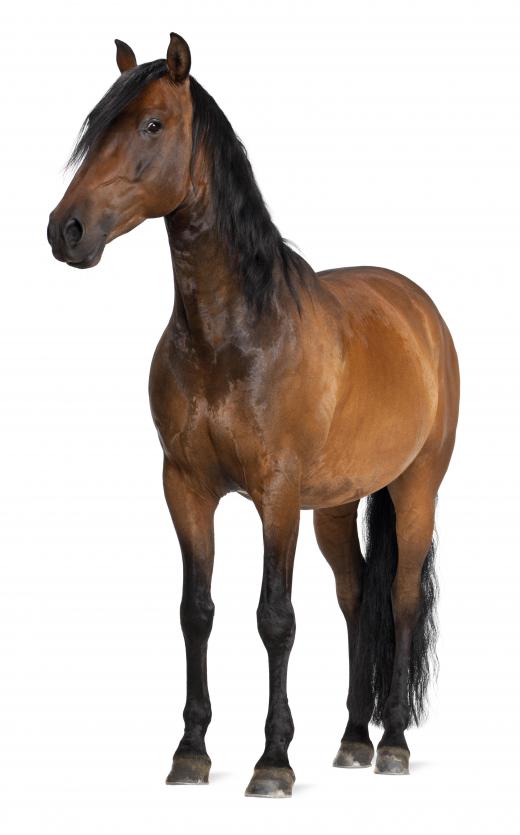At Sports&Hobbies, we're committed to delivering accurate, trustworthy information. Our expert-authored content is rigorously fact-checked and sourced from credible authorities. Discover how we uphold the highest standards in providing you with reliable knowledge.
How do I Take my Horse's Respiratory Rate?
Your horse's respiratory rate is one of the key vital signs (pulse, respiration and temperature) in evaluating your horse's present state of health and stability. With a few simple guidelines, you can familiarize yourself with your horse's average breath rate. It is important to know what values your horse has when healthy, as his normal may be a little above or below the average respiration rate. By taking these measures prior to any onset of ill health, you will be able to interpret changes appropriately.
There are several different ways to measure your horse's respiratory rate. The easiest is to just stand quietly and watch for the gentle rise and fall of your horse's rib area. You may also gently rest your hand on his side and feel the inspiration and expiration.

It is best not to attempt to visually watch for the movement of his nostrils, as the breathing is often too subtle to see. A slight flare can be seen during higher respiratory rates. Some people prefer to use a stethoscope in measuring a horse's respiratory rate but because the breath is so quiet, it is often times more difficult to monitor.
It is important to remember that one breath count is a complete cycle of breathing in and breathing out. You may want to begin by observing your horse after he has been exercised and his breath rate is stronger and higher. Then once you are familiar with his respiration, you can practice getting an accurate count in his resting state.
The average adult horse's respiratory rate is eight to twenty breaths per minute. You may use a 30-second reading and double that number for your total. It is best to not get below a 30-second calculation.

It is important to be aware that your horse's respiratory rate increases with age, exercise, fever, hot, humid weather, pain and pregnancy. Unusual flares of his nostrils, foam or chewed food in nostrils are signs of distress and further investigation is required. Short breaths in a resting horse or exaggerated rib movements are also red flags that your horse needs attention.
One of the most important rules to remember is that your horse's respiratory rate should never exceed his pulse rate. This information, along with his other vital signs should be reported to your veterinarian.
AS FEATURED ON:
AS FEATURED ON:













Discuss this Article
Post your comments